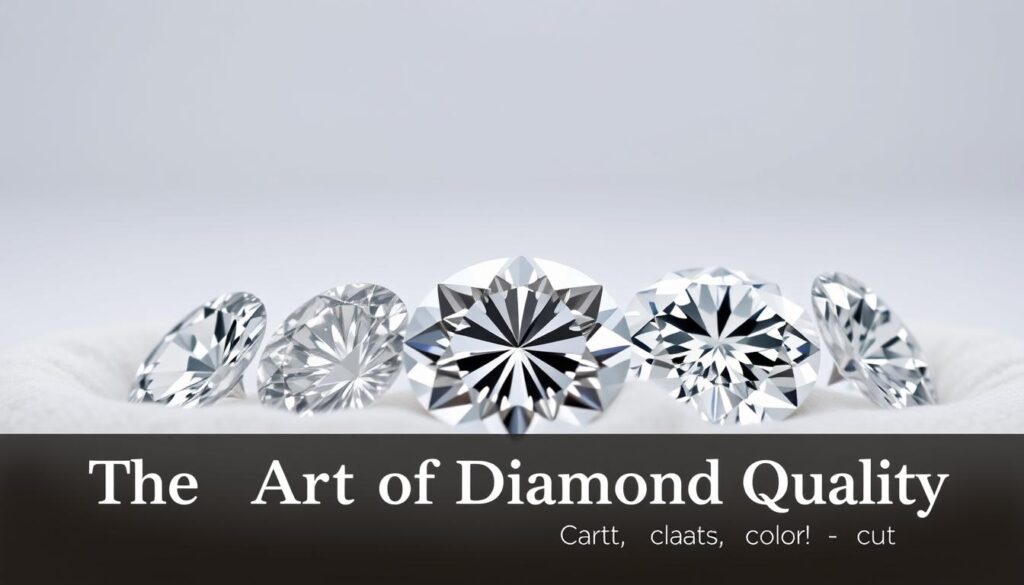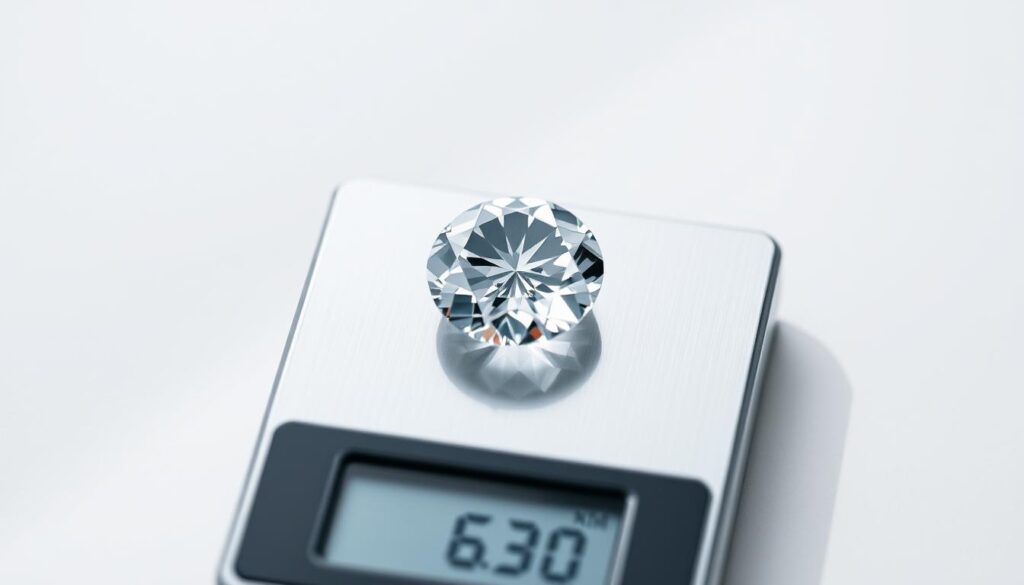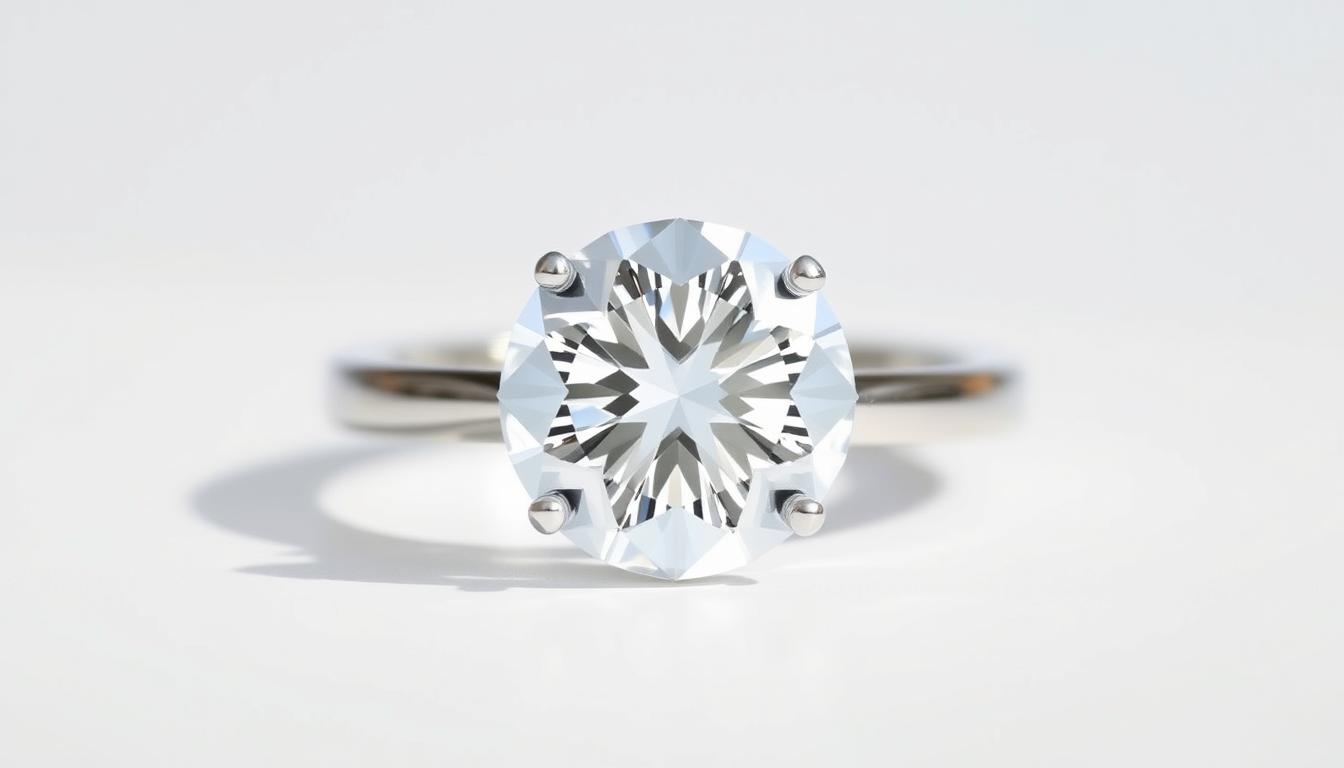Have you ever held a gemstone and wondered about its journey? I still remember my grandmother’s diamond ring – its sparkle symbolized love, but its origin story remained a mystery. Today, we face new questions about the treasures we wear. What if beauty could align with both ethics and affordability?
Modern science now creates dazzling gems that mirror nature’s brilliance. These stones share identical physical properties to mined versions but arrive without environmental concerns. Over 60% of younger shoppers prefer eco-conscious jewelry options, according to recent industry reports.
This guide helps you navigate this exciting landscape. You’ll learn how experts craft these gems using advanced technology. We’ll break down quality factors like cut and clarity – the same standards used for traditional stones. Discover how to maximize value while supporting sustainable practices.
Whether choosing an engagement ring or anniversary gift, your decision carries weight. Every sparkling creation represents progress toward responsible luxury. Let’s explore how to make choices that shine bright – for your style, wallet, and planet.
Understanding Lab Grown Diamonds and Their Sustainable Appeal
Imagine a gem born not from ancient earth, but human ingenuity. These stones mirror nature’s magic through cutting-edge science, offering brilliance without hidden costs. Let’s explore how innovation reshapes luxury.
Science Meets Sparkle
Lab-created gems form in controlled environments using two advanced methods:
- HPHT: Mimics Earth’s pressure and heat to grow crystals
- CVD: Builds layers atom by atom using gas mixtures
Both techniques produce stones matching mined versions in every physical aspect. “Even gemologists need specialized tools to tell them apart,” notes a GIA report.
Earth-Conscious Choices
Traditional mining moves 250 tons of earth per carat. Created alternatives require:
- 90% less water usage
- 60% reduced land disturbance
- Zero risk of conflict sourcing
Energy-efficient production also cuts carbon emissions by up to 30% compared to natural options. This makes lab-origin stones a favorite for eco-aware shoppers wanting guilt-free glamour.
The Art of Diamond Quality: Carat, Cut, Clarity, and Color
Picture a master jeweler examining a gem through their loupe. They’re not just admiring sparkle – they’re decoding a story told through precise measurements and light performance. These four quality pillars work together like instruments in an orchestra, creating harmony between science and beauty.
Decoding Carat and Its Impact on Value
Carat measures weight, not size. One carat equals 200 milligrams – about a paperclip’s weight. Prices jump dramatically at whole numbers, so a 0.95-carat stone often costs 20% less than a 1.0-carat equivalent.

Importance of Cut and Symmetry
A diamond’s sparkle depends more on craftsmanship than carat. Expert cuts create 58 precisely angled facets that act like mirrors. “A well-cut 0.75-carat stone often outshines a poorly cut 1-carat one,” explains gemologist Lara Simmons.
Evaluating Clarity and Color Ratings
Clarity grades range from FL (flawless) to I3 (visible inclusions). Most modern stones fall in VS (very slightly included) or better. Color scales start at D (crystal clear) progressing to warm tones. Many prefer near-colorless G-H grades that appear white in settings while saving 30% on costs.
Balancing these factors creates your perfect gem. Prioritize cut for brilliance, then adjust other qualities within your budget. Remember – the right combination makes your stone uniquely yours.
Pricing Insights and Market Comparisons for Lab Grown Diamonds
What determines a gem’s value in today’s market? The answer lies in smart production methods and shifting consumer priorities. Let’s decode how modern pricing works for those seeking both quality and conscience.
Price Variations by Carat and Cut
Carat weight remains the biggest price driver, but cut style adds surprising twists. A 1-carat round brilliant costs $900, while a 2-carat version jumps to $1,800. Fancy shapes like emerald cuts offer savings – $1,800 for 2 carats versus $2,250 for 2.5-carat cushion cuts.
Colored options break traditional pricing rules. Pink and blue 2-carat stones sit at $1,200 – 80% below natural equivalents. “Shoppers can now access hues once reserved for museums,” says jewelry analyst Mia Tanaka.
Comparing Lab-Grown vs. Natural Diamonds
The cost difference lets buyers upgrade size or quality. A 3-carat princess cut at $2,700 would cost $15,000+ if mined. Energy-efficient production keeps prices 60-80% lower than earth-dug alternatives.
Market stability adds confidence. Improved manufacturing ensures consistent pricing across retailers. Whether choosing classic rounds or bold ovals, your budget stretches further without compromising sparkle.
How to Buy Lab Grown Diamonds: Expert Buyer’s Guide
Navigating the world of modern gemstones requires both knowledge and confidence. Let’s explore smart strategies for making informed decisions that align with your values and style.
Key Considerations When Shopping Online
Reputable retailers provide detailed specifications for every stone. Look for these essential features:
- Third-party verification: GIA or IGI reports confirming quality grades
- 360-degree videos: Examine light performance from all angles
- Gemologist access: Live chat or consultation services
“Always compare at least three stones meeting your criteria,” advises certified gemologist Rachel Nguyen. Filters for carat ranges and color preferences help streamline your selection.
Understanding Certification and Quality Assurance
Authentic certificates include a unique identification number and inclusion map. VS+ clarity grades ensure eye-clean stones, while Excellent-cut gems maximize sparkle. Most retailers disclose weight ranges like 1.00-1.02 carats for transparency.
Prioritize sellers offering:
- 30-day return policies
- Lifetime warranty options
- Conflict-free guarantees
Remember – quality extends beyond the gem itself. Your perfect match combines technical excellence with trustworthy service.
Customization and Setting Options for Engagement Rings
Your ring should reflect your story as uniquely as your love. Modern jewelers offer endless ways to craft pieces that capture personal style while honoring sustainability values. Let’s uncover how shape selection and design tools turn visions into wearable art.
Exploring Diamond Shapes and Settings
Six classic cuts dominate contemporary designs. Round brilliant stones lead in popularity, offering 58 facets for maximum sparkle. Cushion cuts blend vintage charm with modern precision, their soft corners pairing beautifully with halo settings.
Emerald and princess cuts showcase clean lines through step facets. Oval and radiant shapes create elegant elongation – perfect for slender fingers. Each form interacts differently with light and metalwork, influencing the final aesthetic.
Build Your Own Engagement Ring Process
Online configurators simplify creation. Start by choosing:
- Metal type: Platinum’s durability vs. rose gold’s warmth
- Setting style: Solitaire simplicity or pavé accent stones
- Band details: Milgrain edges, engraved patterns
Many designers recommend selecting settings first. “The mounting determines proportions – like choosing a frame before painting,” explains jewelry consultant Derek Wells. Loose stones allow mix-and-match flexibility, ensuring ideal pairings of quality and design.
Finalize with professional consultations. Experts verify prong security and wearability, transforming components into heirlooms ready for life’s adventures.
Additional Tips from Gemologists and Jewelry Experts
Gemologists reveal secrets to choosing stones that look larger than their size. Understanding measurement quirks helps maximize visual impact while maintaining budget goals. Let’s explore professional strategies for selection and maintenance.

Measuring and Selecting the Perfect Carat
Carat ranges matter more than exact numbers. A “1-carat” round brilliant actually weighs 0.95-1.05 carats. Princess and cushion cuts follow similar patterns. Expert tip: A 1.75-carat stone with excellent cut often appears larger than a 2-carat average-cut gem.
Measurement methods vary by shape:
- Round stones: Diameter determines size perception
- Fancy shapes: Length × width shows surface area
Compare moissanite alternatives carefully. Created stones offer 10/10 hardness versus moissanite’s 9.25, ensuring lasting beauty.
Caring for Your Jewelry
Maintain sparkle with simple routines:
- Clean weekly with mild soap + soft brush
- Store pieces separately in fabric-lined boxes
- Schedule professional inspections twice yearly
Loose stones allow custom redesigns as trends evolve. “Proper care makes heirloom-quality pieces achievable for everyone,” states jeweler Elena Torres. White gold settings need rhodium plating every 2-3 years to preserve their mirror finish.
Conclusion
Choosing a gemstone today carries more weight than ever before. Your selection reflects personal values as much as style preferences. Modern options blend scientific innovation with environmental responsibility, offering brilliance that aligns with conscious living.
These creations match traditional stones in every measurable way – from their dazzling sparkle to lasting durability. The key difference lies not in appearance, but in origin stories and ecological footprints.
Cost savings remain significant, with many shoppers allocating saved funds toward custom designs or upgraded settings. Quality factors like cut precision and color grading follow identical standards, ensuring you never compromise on beauty.
As jewelry preferences evolve, these gems stand at the intersection of luxury and practicality. They prove that responsible choices can enhance life’s special moments while protecting resources for future generations. Your perfect piece awaits – a testament to thoughtful elegance that shines bright inside and out.
